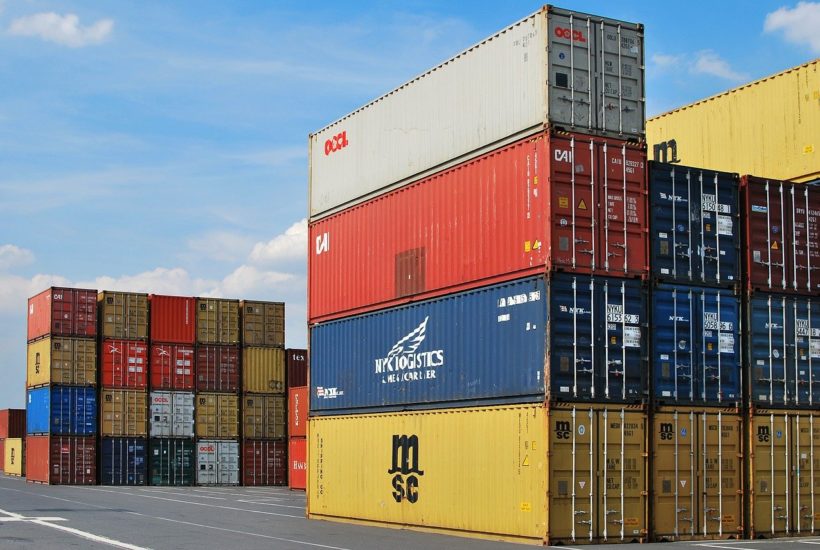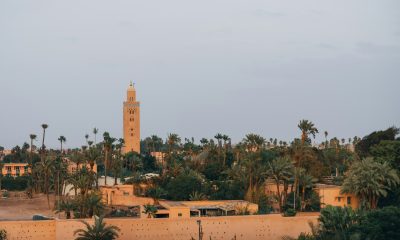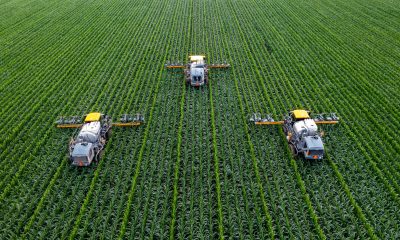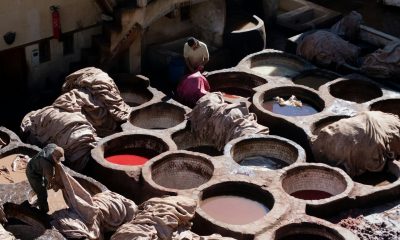Cannabis
Fez-Meknes: an industrial acceleration zone to boost the economy
The latest version of the positioning and placement study for the creation of an Industrial Acceleration Zone (IAZ) in Ain Cheggag has just been unveiled. It provides for the development of eight sectors representing a major potential for the region, with an equivalent of $3.5 billion (32 billion DH) turnover and 62,000 jobs by 2030. The study also recommends financial and tax incentives by the state.

Studies for the creation of an Industrial Acceleration Zone (ZAI) in Ain Cheggag are on track. During a recent meeting organized in the province of Sefrou, MedZ presented the latest version of the positioning and placement study for the creation of this zone on a 500-hectare plot of land.
During this presentation, the officials of the agency in charge of the study pointed out that the industrial potential of Fez-Meknes still remains little exploited, noting that the region is called upon to define a real proposal of the sectors with strong comparative advantage and to attract locomotives likely to develop an ecosystem around the sectors.
With the existence of eight sectors representing a major potential for the region with an equivalent of $3.5 billion (32 billion DH) of turnover and 62,000 jobs by 2030, the study has established a matrix of prioritization of sectors considered high potential for the region and the ZAI. It envisages the establishment of three platforms for designing the new ZAI. These are a Regional Specialities platform, a Green Textile District platform, and a Tech and Mobility platform.
Read more details about the development projects underway in the Fez-Meknes Region and find the most important economic news in the world with our companion app Born2Invest. Download our app for free and be the first to find the most important market updates.
A total area of 182 ha to be developed by 2030
The project of the Fez-Meknes Region’s ZIA envisages the development of a first 60 hectare area, then a second of 122 ha, and a third of 100 ha by 2030. Within this framework, three historical sectors present an interesting potential for the ZIA, capitalizing on the assets of the region. These are the sectors of agro-industry, aromatic and medicinal plants (MAP) and textiles. Once exploited, these three sectors will generate a turnover of $1.07 (9.75 MMDH) and the creation of more than 30,000 jobs.
Five other sectors, with major potential for the ZAI, are conditioned by a support to logistics competitiveness and the attractiveness of locomotives in certain sectors: automotive, railway, electrical and electronics, engineering and other machinery. The study also noted that 7 sectors present a limited opportunity for the BIA, due to low export potential (construction materials and biomass), or lack of match with local resources (chemicals, plastics, pharmaceuticals and aeronautics).
Ain Cheggag IBA is very important for the development of an export industry in the region
The study, carried out on behalf of the regional council, also recommends financial and tax incentives by the state and the region, infrastructure upgrades, and a sustained sales and marketing effort. Officials of the study firm stressed the importance of the Ain Cheggag IBA, which represents a crucial issue for the development of an export industry at the regional level.
It should be remembered that an agreement on the planning, development, promotion, marketing, and management of the Industrial Acceleration Zone (ZAI) Fez-Meknes, was concluded between the Ministry of Industry, Trade and Green and Digital Economy, the Ministry of National Planning, Town Planning, Housing and Urban Policy, the Ministry of the Interior, the Ministry of Economy, Finance and Administrative Reform, the wilaya of the Fez-Meknes Region, the Regional Council of Fez-Meknes and the MedZ company.
__
(Featured image by echosystem via Pixabay)
DISCLAIMER: This article was written by a third party contributor and does not reflect the opinion of Born2Invest, its management, staff or its associates. Please review our disclaimer for more information.
This article may include forward-looking statements. These forward-looking statements generally are identified by the words “believe,” “project,” “estimate,” “become,” “plan,” “will,” and similar expressions. These forward-looking statements involve known and unknown risks as well as uncertainties, including those discussed in the following cautionary statements and elsewhere in this article and on this site. Although the Company may believe that its expectations are based on reasonable assumptions, the actual results that the Company may achieve may differ materially from any forward-looking statements, which reflect the opinions of the management of the Company only as of the date hereof. Additionally, please make sure to read these important disclosures.
First published in LesEco.ma, a third-party contributor translated and adapted the article from the original. In case of discrepancy, the original will prevail.
Although we made reasonable efforts to provide accurate translations, some parts may be incorrect. Born2Invest assumes no responsibility for errors, omissions or ambiguities in the translations provided on this website. Any person or entity relying on translated content does so at their own risk. Born2Invest is not responsible for losses caused by such reliance on the accuracy or reliability of translated information. If you wish to report an error or inaccuracy in the translation, we encourage you to contact us.

-

 Crowdfunding2 weeks ago
Crowdfunding2 weeks agoDeep Learning Italia Launches €400K Crowdfunding to Bridge Italy’s Tech Skills Gap
-

 Impact Investing1 week ago
Impact Investing1 week agoCOP30: Fragmented Climate Politics, Multi-Speed Transition, and Emerging Investment Opportunities
-

 Biotech14 hours ago
Biotech14 hours agoSalmoss Biotech: Turning Salmon Waste Into Breakthroughs in Regenerative Medicine
-

 Markets2 weeks ago
Markets2 weeks agoRice Market Rebounds from Oversold Lows Amid Weak Demand
























